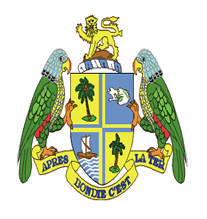Dominica: Government
Key Figures
- Chief of State:
- President Charles A. Savarin
- Head of Government:
- Prime Minister Roosevelt Skerrit
Overview
- Government Name:
- Commonwealth of Dominica
- Constitution:
- Adopted: 1978; States the government's separation of powers in which legislative power is possessed by the parliament, executive by the president and cabinet of ministers, and judicial by the courts.
- Government Type:
- Parliamentary Democracy

Index of Economic Freedom
Country Risk Rating
Government Branches
| Main Powers | Election Process | Election Cycle 1 | |
|---|---|---|---|
| Executive | The president is the head of state, appoints the prime minister, acts in accordance with the advice of the prime minister, and appoints the cabinet of ministers. The prime minister is the head of government, supervises cabinet meetings, can call elections any time, and, in the spirit of the Westminster system, is nominally "Primus Inter Pares," or first among equals. |
The president is elected by parliament, and the prime minister is appointed by the president. |
5 years |
| Judicial | The legal system is based on English common law. There are three magistrate's courts, with appeals made to the Eastern Caribbean court (a superior court of record for the Organisation of Eastern Caribbean States (OECS)) and, ultimately, to the judicial committee of the privy council in London. |
The Eastern Caribbean Supreme Court (ECSC) chief justice is appointed by His Majesty, King Charles III. Other justices and judges are appointed by the judicial and legal services commission. |
The Court of Appeal justices: mandatory retirement age of 65; High Court judges: mandatory retirement age of 62 |
| Legislative | The house of assembly is the legislature, and, together with the president, constitutes parliament. |
The house of assembly has 9 members who are appointed by parliament, and another 21 members elected by plurality vote. |
5 years |
Regional Trade Blocs
International Organization Participation [2]
Environmental Agreements [3]
Tax Information [2]
- Tax Authority:
- Information not available
- Tax Name:
- Information not available
Sources:
- ElectionGuide http://www.electionguide.org/
- EY, http://www.ey.com
- CIA World Factbook, https://www.cia.gov/the-world-factbook/
- U.S. Bilateral Relations Fact Sheets http://www.state.gov/r/pa/ei/bgn/


